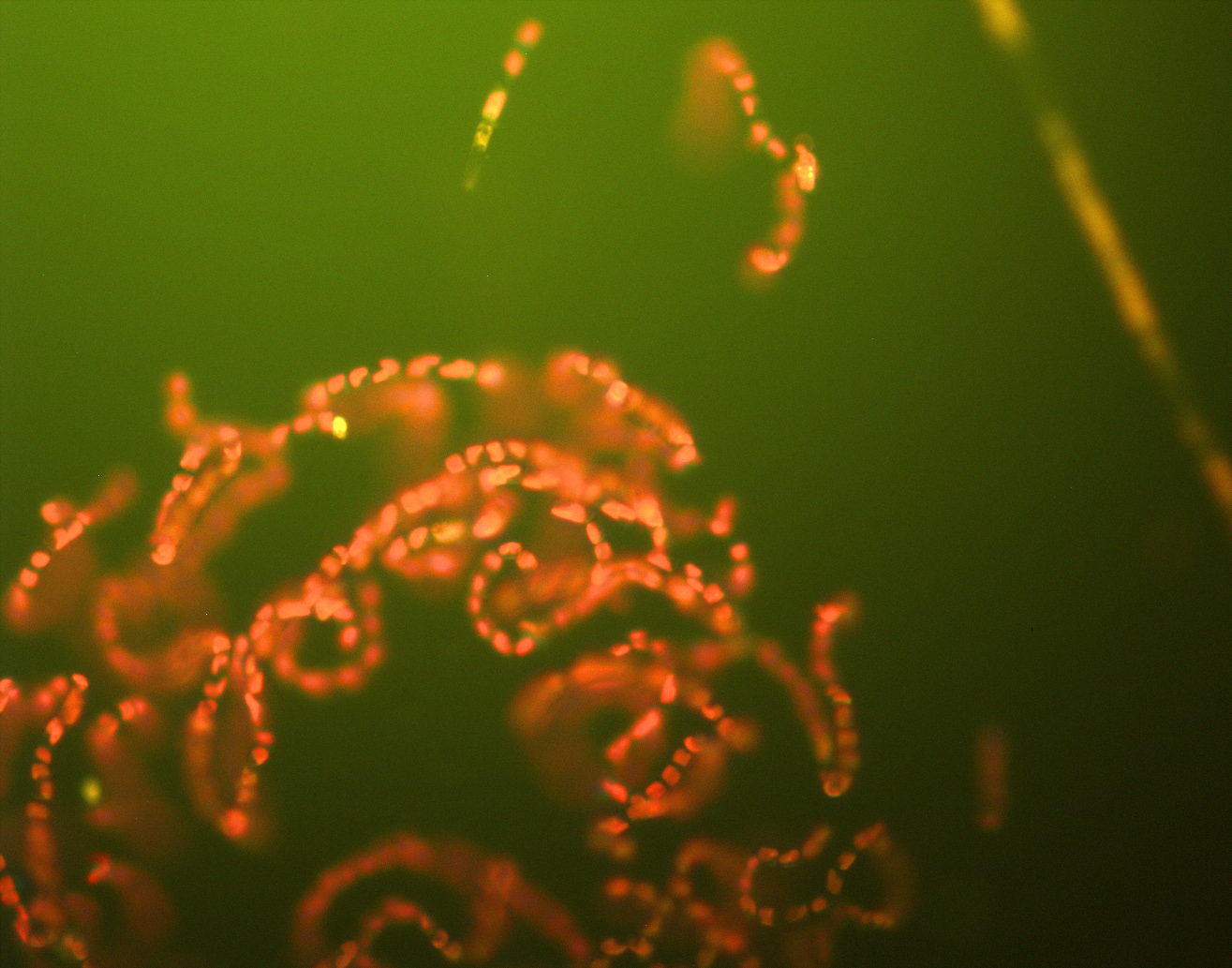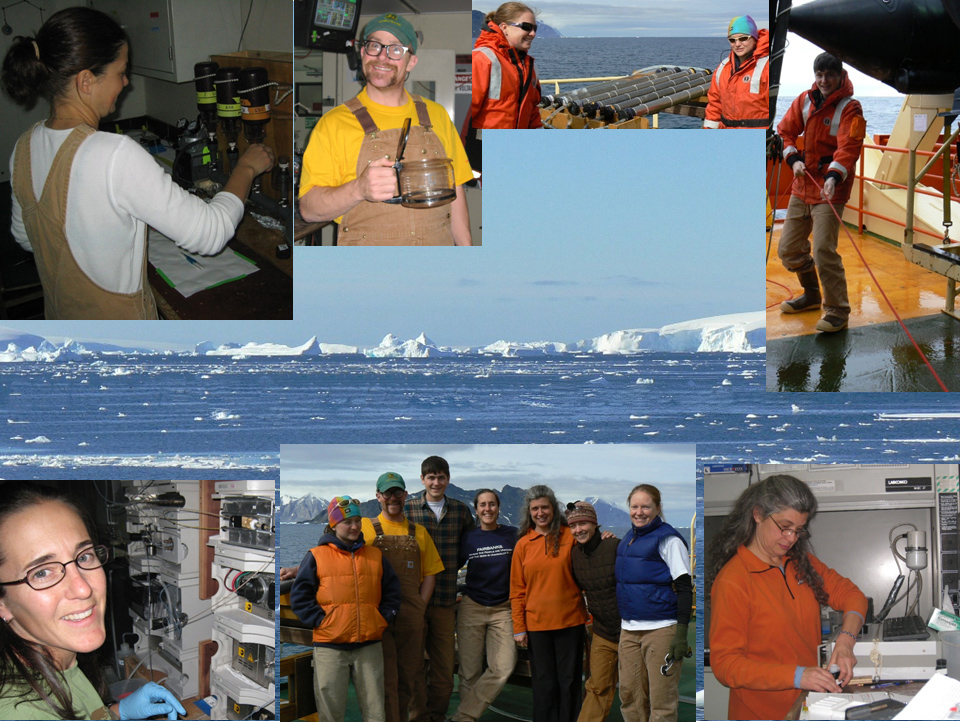Fun With Phytoplankton
Today we will introduce you to the work of B016, the researchers here on the LTER cruise that study phytoplankton (microscopic plants.) This is the 14th year for the group! They study the plant life and measure how much carbon is made to feed bacteria, krill and hence whales and penguins – thus the basis of the food web.
The goal of the phytoplankton team is to understand phytoplankton ecology and physiology along the Palmer LTER grid in relation to environmental parameters such as water column stratification, sea ice, and light. A suite of measurements is obtained at different locations, starting with underwater light measurements with a Profiling Reflectance Radiometer (PRR).

The PRR being deployed in the water.
Further sampling in the water is done based on what is learned about the light under the surface.
The B016 group samples up to 100 liters of sea water per day, or roughly 30 liters per station. Each liter of water is then filtered in order to concentrate the otherwise dilute phytoplankton for analysis. The water is also filtered for numerous measurements, one of which is pigment analysis by the High Performance Liquid Chromatography (HPLC.) Simply put, the HPLC determines concentrations of specific pigments present in the phytoplankton utilized by different taxonomic groups, and can thus lead to our understanding of the light absorption and group recognition of the phytoplankton population throughout the water column.
Anther important measurement taken by our team is the physiological status (think stressed or not) of the phytoplankton. In conjunction with group 0326, I work on the Fluorescence Induction and Relaxation System (FIRS) to measure stress levels in the phytoplankton.

A colony of fluorescent chaetocerossocialis
The Rad-team conducts primary production experiments to determine the uptake of Carbon by the phytoplankton. The use of radioactive carbon allows the rad-team to measure the exact amount of carbon the phytoplankton incorporate into carbohydrates, via photosynthesis, in a 24-hour period.
We’ve assembled some pictures of our team below– enjoy!

At top right is Scott Baker, helping pay out the PRR cable to a maximum depth of approximately 100 meters (about 300 feet.) At top left, Karie Sines filters the water. At bottom left, Wendy Kozlowski works on the HPLC machine. At bottom right, I work on the FIRS to measure phytoplankton stress levels. Second from top-right is the Rad-team, Diane Chakos and Katie Haman. Last but far from least, at second from topleft is Jeff, who not only filters tens of liters of seawater a day, but also keeps the 016 morning team well stocked with coffee, a necessity at 4:00 am! No explanation is needed for the bottom, middle picture: Team 016!

 No comments
No comments 






